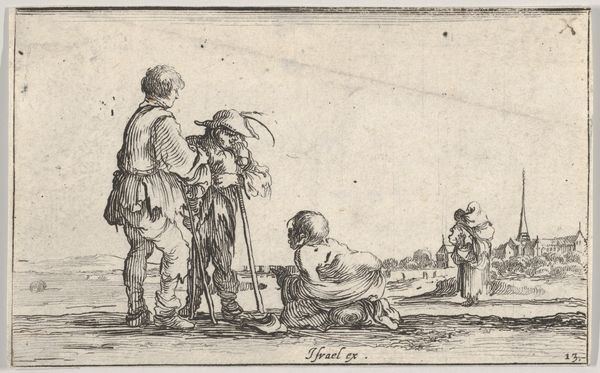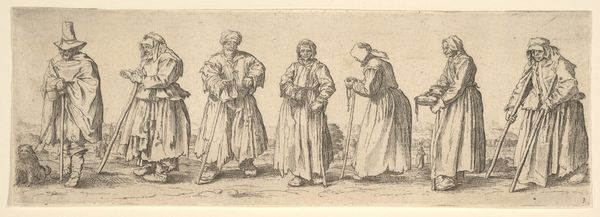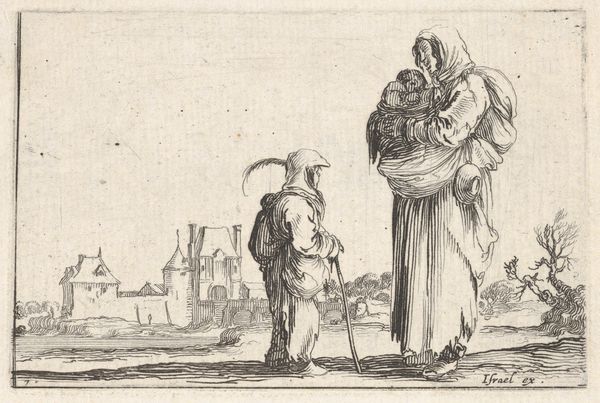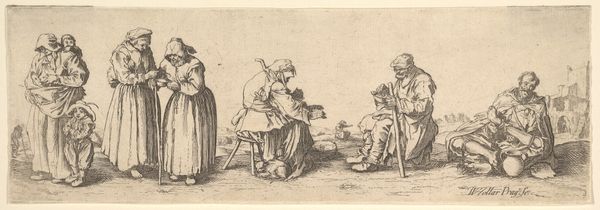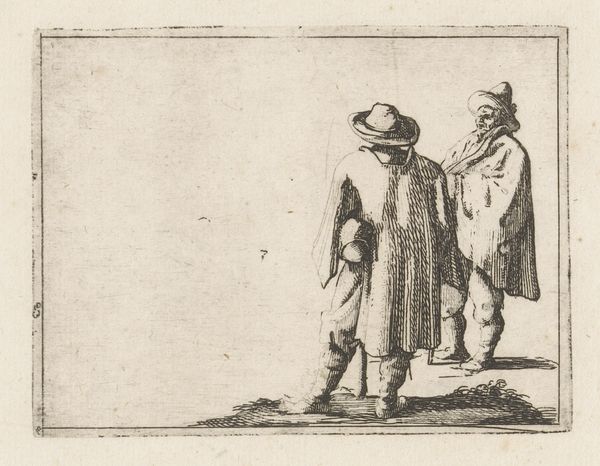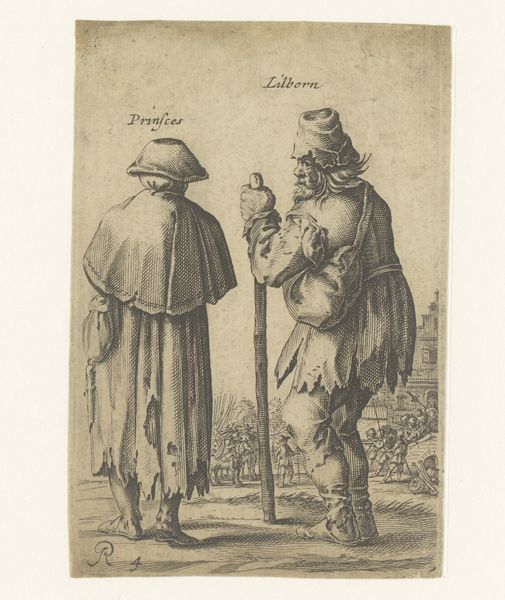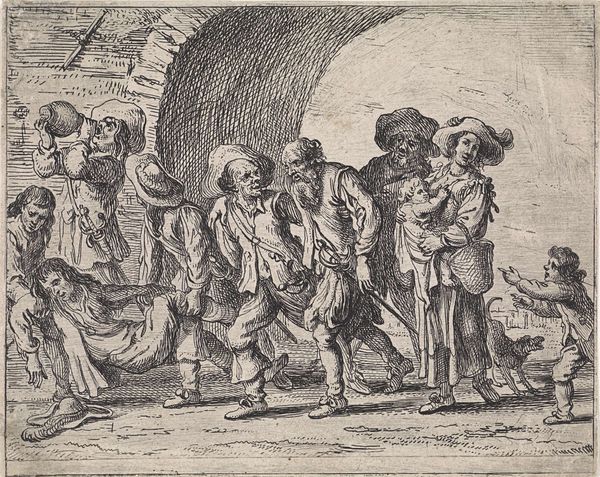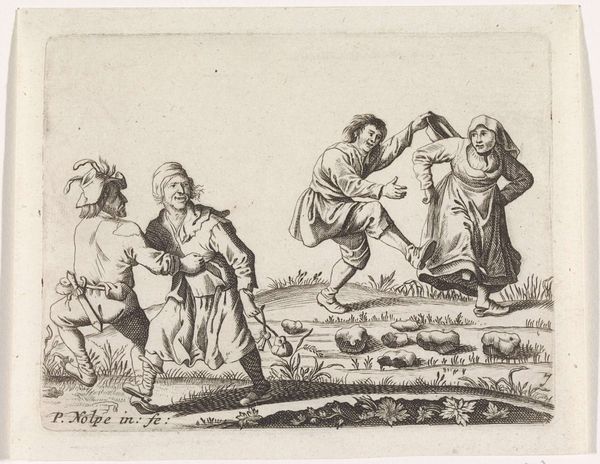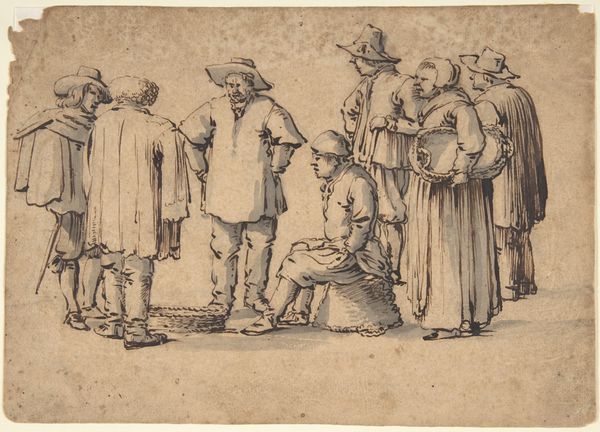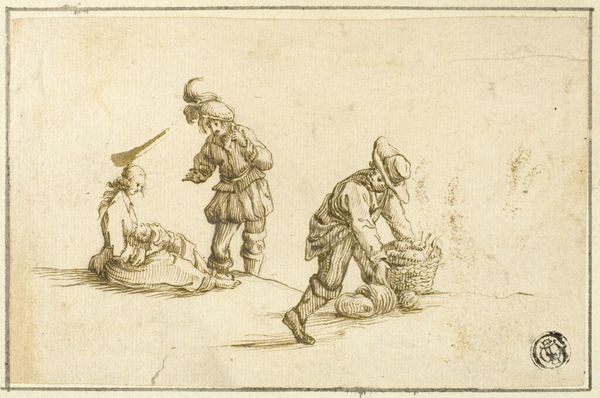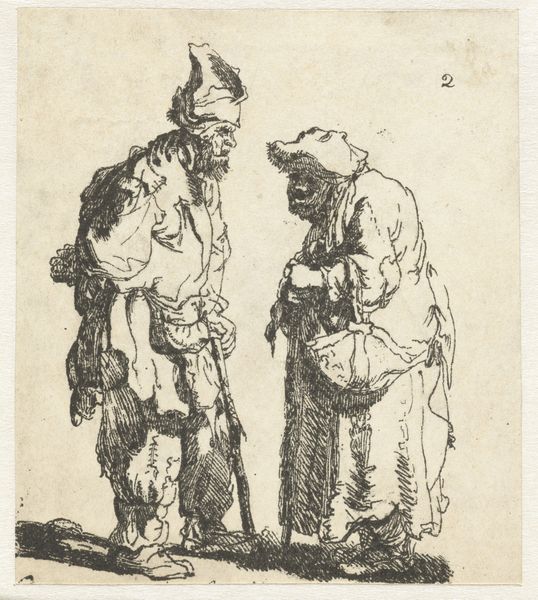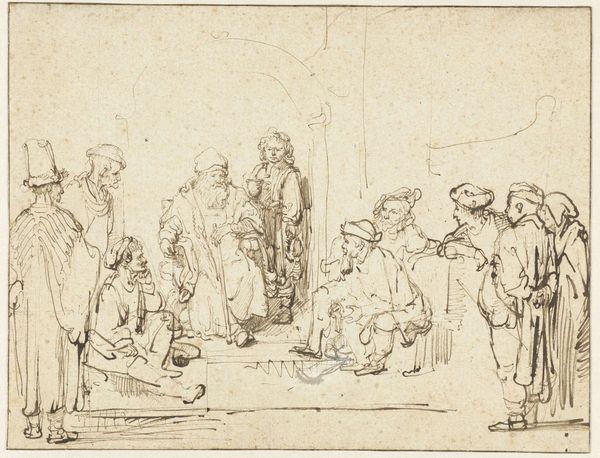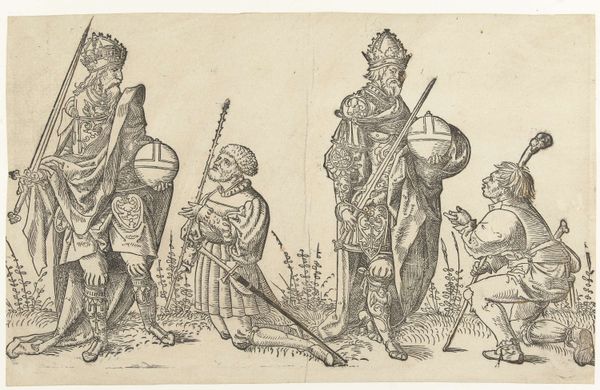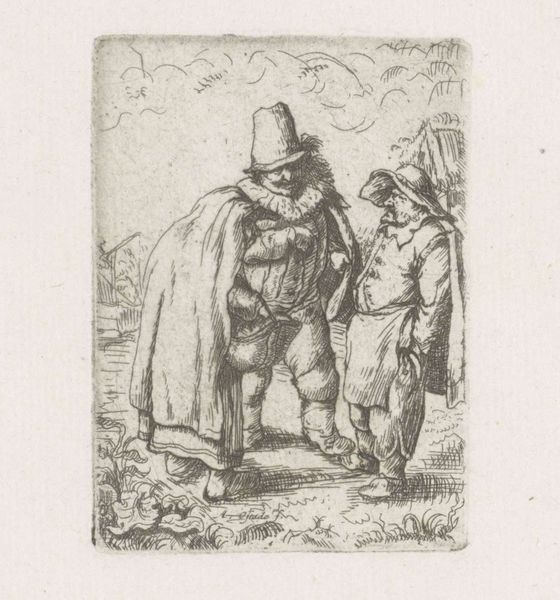
drawing, print, etching
#
drawing
#
narrative-art
#
baroque
# print
#
etching
#
landscape
#
figuration
Dimensions: 3 5/16 x 10 in. (8.4 x 25.4 cm) cut on platemark
Copyright: Public Domain
Curator: Welcome. Before us is "Eight Beggars," an etching by Wenceslaus Hollar, created around 1630. The work resides at the Metropolitan Museum of Art. Editor: My immediate reaction is one of empathy. There's something stark and honest about their presentation that feels immediate, even across centuries. I'm particularly drawn to the varied postures of the figures and how this impacts the emotional impact of the piece. Curator: It’s intriguing to observe Hollar’s choice to depict this band of figures, perhaps echoing the social realities and class issues of his time. The beggars could signify the underbelly of society. The etching medium lends itself well to themes of exposure and fragility, as you pointed out. Editor: Agreed, and let's not overlook the composition here. They’re spaced rather evenly across the scene. Their postures invite analysis, as though they are caught mid-stride, mid-sentence, but also self-aware and stoic about the viewer. What message does Hollar send by structuring the space this way? Curator: It allows for nuanced consideration of each character while emphasizing their collective identity as "beggars," thus provoking us to ponder what unifies people experiencing that position in society. The attire they wear, or rather the tattered remains of garments, also evokes a sense of shared suffering and the universal human condition. There is very little shading to hide them from scrutiny. Editor: Yes, I appreciate how little Hollar conceals. Look at the raw lines used for detailing their clothing and faces! The use of the print as a medium means the potential for the scene to be mass-reproduced for popular consumption. That must surely add a dimension of political significance to the work, suggesting that widespread societal reckoning is needed. Curator: Indeed. And by giving them individualized traits, Hollar disrupts any simple assumptions. Note the man at the center turning slightly to look at a fellow beggar. Editor: It adds an air of contemplation to a depiction that could have just simply served to showcase despair. I wonder, what enduring resonance can a 17th century image like this hold? Curator: Perhaps the notion that vulnerability and marginalization are evergreen struggles, demanding our compassion and scrutiny. Editor: Precisely. Hollar seems to remind us that observing their form and space leads to observing our collective and shared human burden across the ages.
Comments
No comments
Be the first to comment and join the conversation on the ultimate creative platform.
